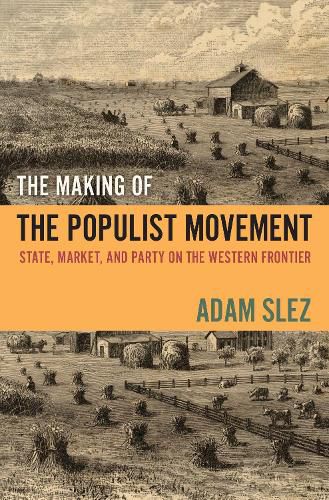Readings Newsletter
Become a Readings Member to make your shopping experience even easier.
Sign in or sign up for free!
You’re not far away from qualifying for FREE standard shipping within Australia
You’ve qualified for FREE standard shipping within Australia
The cart is loading…






When it comes to explaining the origins of electoral populism in the United States, we often look to the characteristics and conditions of voters, overlooking the reasons why populist candidates emerge in the first place.
In The Making of the Populist Movement, Adam Slez argues that the rise of electoral populism in the American West was a strategic response to a political environment in which the configuration of positions was literally locked in place, precluding the success of new contenders or otherwise marginal competitors. Combining traditional forms of historical inquiry with innovations in network analysis and spatial statistics, he shows how the expansion of state and market drove the push for market regulation in southern Dakota, where an insurgent farmers’ movement looked to third-party alternatives as a means of affecting change. In the context of western settlement, the struggle for political power was synonymous with the struggle for position in an emerging urban hierarchy. As inequities in the spatial distribution of resources became more pronounced, appeals to agrarian populism became a powerful political tool with which to wage partisan war.
Offering a fresh take on the origins of electoral populism in the United States, The Making of the Populist Movement contributes to our understanding of political action by explicitly linking the evolution of the political field to the transformation of physical space through concerted action on the part of elites.
$9.00 standard shipping within Australia
FREE standard shipping within Australia for orders over $100.00
Express & International shipping calculated at checkout
When it comes to explaining the origins of electoral populism in the United States, we often look to the characteristics and conditions of voters, overlooking the reasons why populist candidates emerge in the first place.
In The Making of the Populist Movement, Adam Slez argues that the rise of electoral populism in the American West was a strategic response to a political environment in which the configuration of positions was literally locked in place, precluding the success of new contenders or otherwise marginal competitors. Combining traditional forms of historical inquiry with innovations in network analysis and spatial statistics, he shows how the expansion of state and market drove the push for market regulation in southern Dakota, where an insurgent farmers’ movement looked to third-party alternatives as a means of affecting change. In the context of western settlement, the struggle for political power was synonymous with the struggle for position in an emerging urban hierarchy. As inequities in the spatial distribution of resources became more pronounced, appeals to agrarian populism became a powerful political tool with which to wage partisan war.
Offering a fresh take on the origins of electoral populism in the United States, The Making of the Populist Movement contributes to our understanding of political action by explicitly linking the evolution of the political field to the transformation of physical space through concerted action on the part of elites.